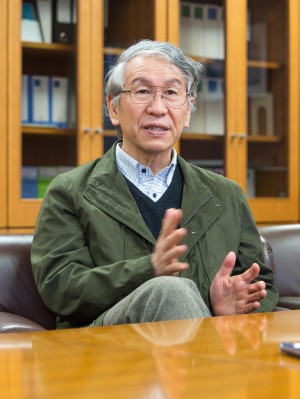Close to the end of the year 2013, we had encouraging news for the ILC. On 24 December, the Japanese cabinet released the government budget decision for fiscal year 2014 – which includes an official budget for the International Linear Collider. The amount of the budget is 50 million yen, about half a million US dollars, which might not seem a lot at first glance. However, this budget is highly significant in a symbolical way towards the realisation of the ILC, since this budget represents a qualitative change in the status of the ILC in the Japanese government. It means that the ILC is now recognised as a formal project.
This budget will be used by the Ministry of Education, Culture, Sports, Science and Technology (MEXT) to investigate and analyse the requirements and issues for the realisation of the ILC, and for collecting objective data which serves as the basis for the future governmental decision.
Along with this development at the government level, the Japanese research community is also taking a next step. On 6 February, KEK announced the creation of an office responsible for the ILC project, the ILC Planning Office. The office will be headed by Atsuto Suzuki, Director General of KEK.
KEK has been playing a leading role in research and development efforts for the ILC. “With the national budget officially allocated, the ILC project now needs the driving force to bring forward the project. The new office, the Planning Office for the International Linear Collider, will coordinate and integrate efforts on planning, scheduling, and managing research activities. It will also take care of internal and external cooperation and coordination as well as handling discuss the desirable way to organize future international laboratory, or the way to manage it, the research activities already going on,” said Suzuki.
The new office is just a section in the KEK organisation, but this is merely a starting point. “I am planning to expand this office to a pan-Japan organisation with a participation of all the researchers and engineers in Japan, and ultimately, make it into an international ILC pre-laboratory,” he said.
Suzuki aims to deepen the industry-academia collaboration, which is currently carried out through the cooperation with the Advanced Accelerator Association Promoting Science and Technology (AAA). “We will have a new facility in KEK towards the industrialisation of the superconducting cavities. The new office is also in charge of the industry-academia collaboration,” said Suzuki.
In addition, the expert panel established under MEXT started their discussions on the issues pointed out by Science Council of Japan last summer, such as scrutinising the cost evaluation or calculating the number of scientists and engineers needed to build the accelerator and facility, or how to distribute the cost internationally.
“With all these developments, I think we can say that the year 2014 will be a real starting year for the ILC as a project,” says Suzuki. They will work on the detailed accelerator design, and issues to manage the international laboratory if it is built in Japan.
Suzuki says, “We will do our best to appeals to relevant counterpart such as OECD to make the ILC project endorsed as an international project under the aegis of an appropriate international organisation like OECD or UNESCO, to solidify the foundation for the government to start the international negotiations as soon as possible.”
February has traditionally been a memorial month for the ILC project. The release ceremony of the Reference Design Report took place in February 2007, and the new organisation for the realisation of the project, the Linear Collider Collaboration, was also established in February in 2013. This new office in KEK may well become another memorial event for “ILC February.”


Recent Comments